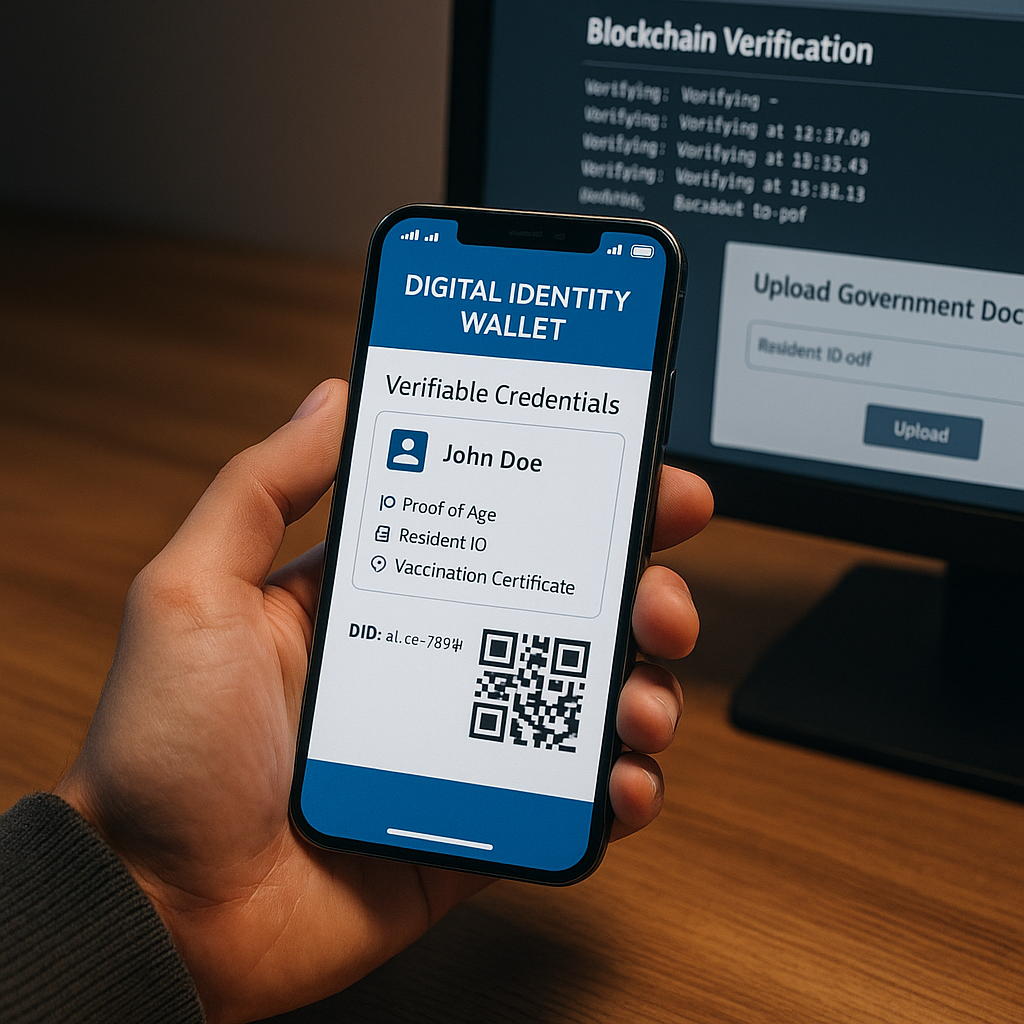Digital Identity Becomes Key Use Case for Blockchain
In May 2025, a growing consensus across tech and finance communities is forming around a surprising outcome: digital identity has quietly become one of blockchain’s most important real-world use cases. Once thought to be dominated by DeFi and NFTs, the crypto sector is now experiencing renewed purpose in building infrastructure for verifiable, sovereign, and interoperable digital identities.
Amid regulatory tightening, cybersecurity threats, and global migration patterns, governments and enterprises alike are investing in blockchain-based identity frameworks—not just as a niche experiment but as a foundational layer for global digital transformation.
Why Now? The Drivers Behind the Trend
Several converging developments in 2024 and 2025 made digital identity a strategic priority:
-
Global crypto regulation: As KYC and AML compliance became mandatory, blockchain-native identity layers became necessary for DeFi and exchanges to survive.
-
AI impersonation risks: The rise of AI-generated deepfakes and synthetic fraud highlighted the need for verifiable credentials.
-
Refugee and cross-border identity: Governments began using portable digital IDs for displaced persons and borderless workers.
-
Web3 access and reputation: From gaming to DeFi, platforms now require portable proof-of-humanity or on-chain reputation to interact safely.
Combined, these forces catalyzed massive investment in identity-focused blockchain infrastructure from both the public and private sectors.
What Is Blockchain-Based Digital Identity?
A blockchain digital identity is a decentralized, cryptographically secured profile that allows individuals to prove who they are without needing to rely on centralized databases. It typically includes:
-
Self-sovereign identity (SSI): Users control and store their credentials, issuing selective disclosures when needed.
-
Verifiable credentials: Digital documents issued by trusted institutions (e.g., government, universities) and anchored on blockchain.
-
Decentralized identifiers (DIDs): Unique cryptographic addresses that serve as secure digital identifiers, often interoperable across blockchains.
These elements allow individuals to authenticate across services while preserving privacy and minimizing the risk of data breaches.
Governments and Institutions Take the Lead
In 2025, multiple countries and alliances are actively piloting or deploying blockchain-based ID systems:
| Region | Project / Framework | Status |
|---|---|---|
| European Union | EUDI Wallet integrated with Polygon ID | Pilot expansion |
| India | Aadhaar-linked zkID pilot with Starknet | Public testing |
| Brazil | GovBR chain ID on Ethereum rollup | Launched in Q1 |
| United States | DHS-backed Secure Digital Credentials | Ongoing pilot |
| Kenya | Borderless Identity Initiative on Celo | Deployed locally |
In parallel, organizations like the World Bank, IMF, and UNHCR are funding projects that use digital IDs to manage benefits, disaster relief, and access to healthcare.
Key Blockchain Projects Leading the Identity Shift
Several Web3 protocols are now specialized in identity infrastructure:
-
Polygon ID: Zero-knowledge identity tool integrated with EUDI pilots and DeFi apps.
-
Civic: Longstanding identity protocol relaunched with modular credentialing.
-
Worldcoin: Despite controversy, its biometric identity layer has been integrated into basic income pilots.
-
Dock: Enterprise-grade verifiable credentials platform focused on healthcare and education.
-
Gitcoin Passport: Used by DAOs to establish reputation without doxxing contributors.
These platforms are now considered essential middleware—used by wallets, dApps, and governments to verify users securely and privately.
Use Cases Across Sectors
Finance & Compliance
-
DeFi protocols now integrate on-chain identity layers to restrict access to verified users.
-
NFT marketplaces use KYC-linked IDs for high-value purchases.
-
Exchanges collaborate on interoperable credential systems to comply with Travel Rule requirements.
Healthcare & Education
-
Patient records and degrees are now issued as verifiable credentials stored in personal ID wallets.
-
Reduces fraud and gives users lifetime access to their documents—cross-border and cross-institution.
Workforce & Employment
-
Gig platforms verify freelancers with blockchain IDs to build portable reputation profiles.
-
Work visas and credential recognition processes are being reimagined using cryptographic IDs.
Civic Applications
-
Voting pilots using identity wallets have launched in Estonia, Brazil, and South Korea.
-
Benefits distribution for refugees and the unbanked is now tied to verified on-chain credentials.
Benefits of Blockchain Identity Systems
| Feature | Impact |
|---|---|
| Self-sovereignty | Users own their data and share selectively |
| Interoperability | Works across borders and platforms |
| Censorship resistance | ID cannot be revoked by single authorities |
| ZK-Privacy | Zero-knowledge proofs preserve anonymity |
| Tamper-resistance | On-chain timestamping prevents fraud |
These features make blockchain identity uniquely suited for the demands of a digitized, global society.
Challenges and Criticisms
Despite its promise, blockchain-based identity still faces real hurdles:
-
Surveillance risks: Tying real-world identity to chains can enable oppressive oversight.
-
Accessibility: Requires smartphones, stable internet, and basic digital literacy.
-
Fragmentation: Competing standards may delay true interoperability.
-
Scalability: Public chains must handle high-volume authentication traffic securely.
Ethical design and multi-stakeholder governance will be critical to ensure identity systems empower users rather than replicate existing abuses.
The Investment Landscape
Venture capital in Q1 2025 reflects the trend:
-
Over $600M has been allocated to digital ID projects, including $200M in Series B funding for Polygon ID and $80M for identity rollup networks.
-
Enterprise pilots are accelerating as identity becomes key for AI safety, IoT onboarding, and real-world asset tokenization.
Corporate players like Microsoft, ConsenSys, Mastercard, and Accenture are also deepening their involvement, often in partnership with governments.
The Road Ahead
-
2025–2026: Global standardization efforts via W3C and ISO identity frameworks
-
2027: Integration with central bank digital currencies (CBDCs) for verified access and payments
-
2028 and beyond: On-chain identity becomes default authentication layer across Web3, fintech, and civic tech
Conclusion
In May 2025, it’s increasingly clear that digital identity is no longer a secondary feature of blockchain—it’s becoming the backbone. As decentralized ID systems continue to mature, the impact will go far beyond crypto. From access to capital to the right to vote, blockchain-based identity may soon underpin the most important rights and responsibilities in the digital age.
